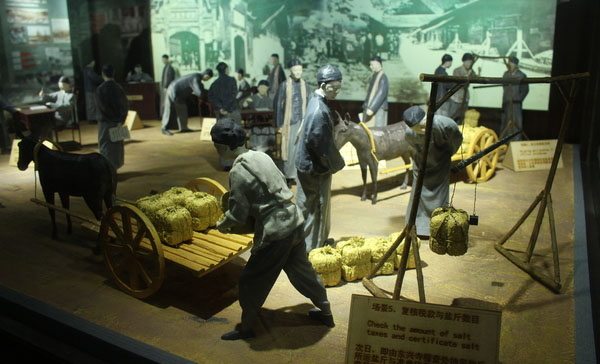Cultural preservation along the ancient Sichuan salt path

The Zigong Salt Making Industry History Museum shows how the ancient local government double-checked tax payments and measured the quantity of salt held by the salt merchants.
Throughout history, the area today known as the city of Zigong has continuously supplied salt for people in Sichuan and the surrounding provinces. It formed an ancient Sichuan salt path, connecting places in all directions.
This legacy means the city has rich historical and cultural heritage which has spread out along the salt path. The sheer number of items and ornaments related to this salt path have put this area in consideration for a tentative application to UNESCO’s world heritage list.
The ancient Sichuan salt path refers to five paths, starting from Zigong and connecting Sichuan Province with Guizhou, Chongqing, Hubei, Hunan and Yunnan. Although hundreds of years have passed, the ancient path still retains a degree of charm.
Cheng Longgang, an associate research fellow in the Zigong Salt Making Industry History Museum and an expert in salt history, states: “Zigong well salt began being harvested in the Eastern Han Dynasty, took shape in the Jin Dynasty, became famous in the Song Dynasty, flourished in the Qing Dynasty and headed to glory during the Chinese People’s War of Resistance against Japanese Aggression.” During the eight years of the War of Resistance, roughly 1.9 million tons of table salt were produced in Zigong, which was supplied to people in the central, northwestern and southwestern China—approximately a third of the country’s population.
Although parts of the ancient path have been covered by modern highways, much of it still paved by slate, which can be distinctly identified. During the mid-Qing Dynasty, the need for salt transportation led the towns along the path to build complicated urban patterns.
Old streets, ancient towns, ancestral halls, temples and memorial archways along the ancient path not only witnessed the former economic prosperity driven by the development of the salt industry, but also represent precious cultural heritage left for later generations. With the development of the salt industry, a number of rich salt merchants emerged and invested a lot of money to build ancestral halls, houses and other exquisite architecture. However, these examples of cultural heritage are difficult to protect and maintain. Some have been damaged or neglected and left in a state of disrepair for many years. It’s time to take action to preserve this legacy.
